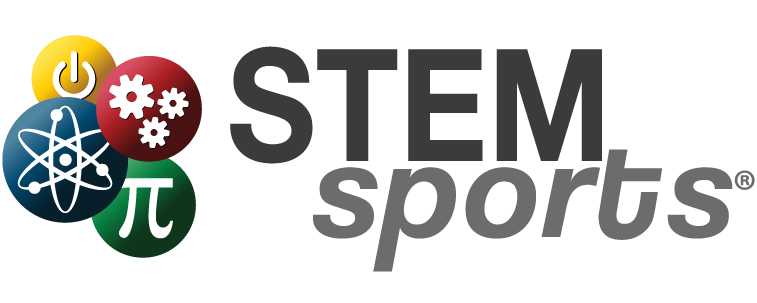Table of Contents
In the constantly evolving education landscape, educators need to design effective STEM (science, technology, engineering, and mathematics) curricula that engage and inspire their middle school students. One powerful tool that can help achieve this is a STEM curriculum map. By creating a well-structured roadmap of concepts, skills, and activities targeted toward a clear goal, educators can ensure a comprehensive and cohesive learning experience for their students. In this article, we’ll explore the benefits of STEM curriculum mapping and provide practical guidance on how educators can develop and implement these maps in their classrooms.
Understanding the Importance of a STEM Curriculum Map in Middle School
Middle school is an impactful, important time in a child’s education, especially in STEM subjects. When educators create STEM curriculum maps, lessons have a better chance of success and increased student retention. The process of creating a STEM curriculum map allows educators and school administrators to think critically about the lesson they are going to teach their students. This goal-driven approach to education is a great way to ensure that each lesson is tied to a specific goal or classroom standard – such as Next Generation Science Standards (NGSS) and Common Core State Standards (CCSS).
Steps to Developing a Middle School STEM Curriculum Map
Developing a Middle School STEM Curriculum Map involves a systematic process that ensures a comprehensive and cohesive framework for teaching STEM subjects. Here are the steps to guide you through the development process:
- Set Goals: Begin by establishing clear goals and objectives for the STEM curriculum. These goals should align with the overall educational vision of the school or district and reflect the desired outcomes for students’ STEM learning.
- Identify Content Areas: Determine the specific STEM content areas included in the curriculum map. This typically includes Science, Technology, Engineering, and Mathematics, but it can also extend to related disciplines, such as computer science, robotics, and environmental science.
- Align with Standards: Review and align the curriculum map with relevant educational standards, such as state or national science and mathematics standards. Ensure the curriculum addresses the key concepts, skills, and knowledge outlined in the chosen framework.
- Establish Key Concepts and Skills: Identify the essential concepts and skills within each content area that students should develop through the curriculum. These should reflect the foundational knowledge and competencies required for future STEM learning and careers.
- Define Instructional Methods: Determine the instructional methods that will be employed to engage students and promote active learning. Consider strategies, such as inquiry-based learning, project-based learning, problem-based learning, and experiential learning. Each method should align with the curriculum goals and facilitate the development of critical thinking and problem-solving skills.
- Design Assessments: Develop a variety of assessment techniques that align with the curriculum goals and instructional methods. These may include formative assessments, summative assessments, performance assessments, and the creation of student portfolios. The assessments should effectively measure student progress and provide meaningful feedback for improvement.
- Integrate Technology: Determine how technology will be integrated into the curriculum to enhance teaching and learning. Identify specific tools, resources, and software that will be utilized to support student engagement, exploration, and experimentation. Consider incorporating coding and programming activities to develop computational thinking and problem-solving skills.
- Foster Cross-Curricular Connections: Identify opportunities to connect STEM concepts with other disciplines, such as language arts, social studies, and the arts. Look for natural intersections where STEM concepts can be applied or explored, fostering interdisciplinary thinking and highlighting the relevance of STEM in different contexts.
- Ensure Inclusion and Equity: Embed principles of inclusion and equity throughout the curriculum map. Ensure that the curriculum is accessible to all students, regardless of their background or abilities. Incorporate diverse perspectives, examples, and real-world contexts to promote inclusivity and representation.
- Review and Refine: Continuously review and refine the curriculum map based on feedback from teachers, students, and other stakeholders. Regularly assess its effectiveness in meeting the desired learning outcomes and make necessary adjustments to increase student engagement.
By following these steps, educators can develop a Middle School STEM Curriculum Map that provides a structured and comprehensive framework for teaching STEM subjects, fostering students’ engagement, critical thinking, and problem-solving skills in preparation for their future STEM endeavors.
Ensuring Cross-Curricular Connections in your STEM Curriculum Map
Cross-curricular instruction, also known as interdisciplinary or integrated instruction, is the practice of integrating multiple subject areas within classroom lesson plans. Instead of isolating subjects, cross-curricular instruction seeks to create meaningful connections and explore the interrelationships among different disciplines. When creating the STEM curriculum maps, it is important to keep this effective teaching method in mind. It is recommended this be included when creating STEM lesson plans for middle school students. This approach to learning is tied to increased student engagement, retention, and comprehension.
Adapting the Curriculum Map to Meet Student Needs
Another key element to remember when creating a STEM curriculum map is that nothing is permanent. Educators need to pivot the approach and implementation of STEM lessons to best suit the needs of their classrooms. It can be difficult to cater to the needs of every student, but STEM curriculum maps provide the flexibility to pivot teaching methods and approaches as needed. It is recommended educators and school administrators take time to reflect on the success of STEM curriculum maps periodically to ensure effectiveness, creating optimal student learning experiences.
Enhancing your STEM Curriculum Map with STEM Sports
STEM Sports® is a K-8 education company that uses sports as a way to facilitate STEM curriculum. This curriculum makes the perfect addition to any middle school classroom. Each lesson incorporates hands-on learning methods that promote critical thinking, problem-solving skills, and real-world application of skills. If you are an educator or school administrator looking to add and enhance their STEM curriculum map, learn more about the STEM Sports® curriculum offerings.
